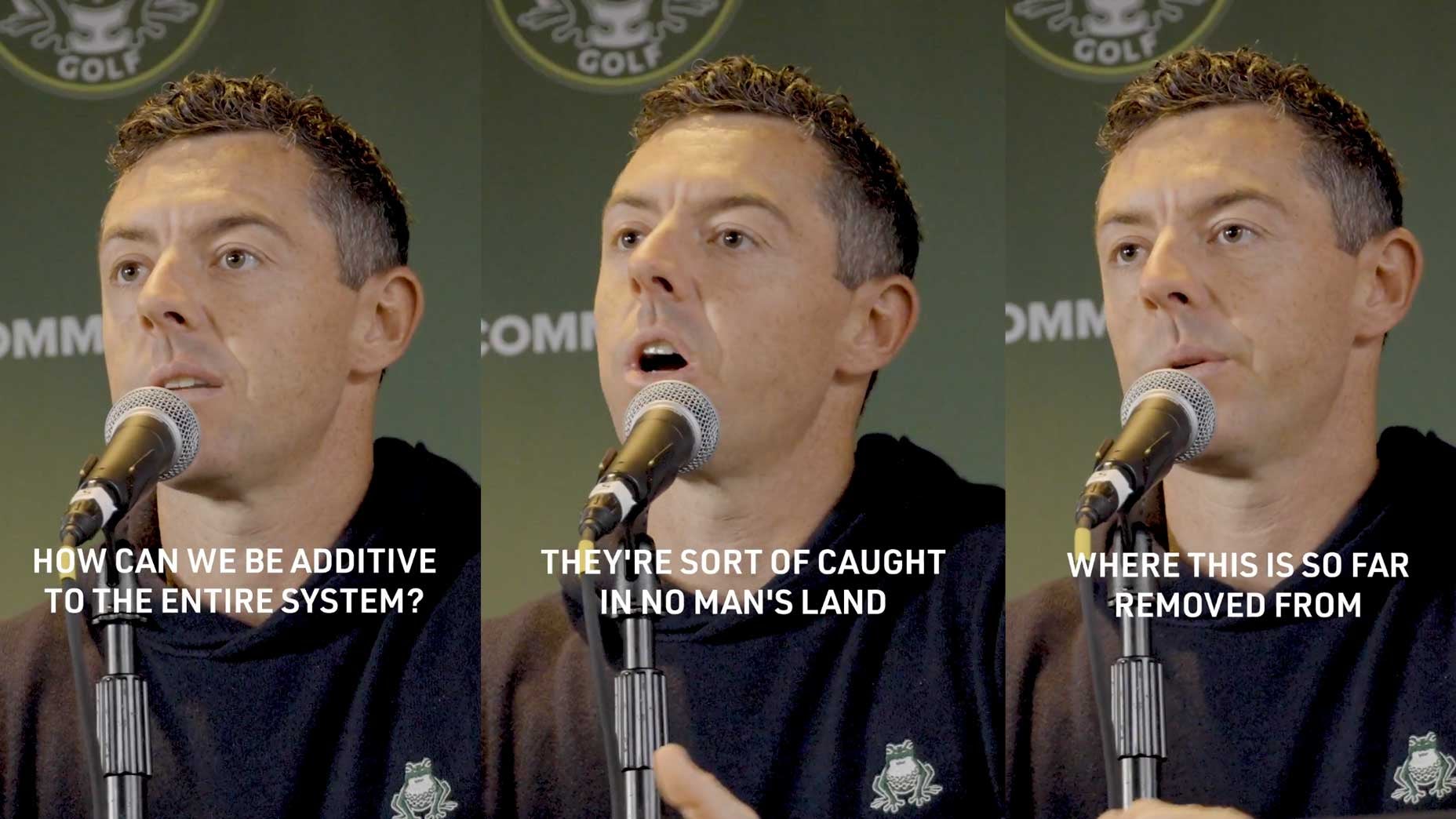How is Rory McIlroy’s new golf league different than LIV? Let him explain

Rory McIlroy explains the differences between TGL and LIV Golf at a press conference for Boston Common Golf.
Emma Devine
Rory McIlroy doesn’t want to talk about LIV Golf. He hasn’t wanted to talk about LIV for a while now, especially in the wake of merger talks between the PGA Tour and the Saudi PIF. That’s not to say he’s avoided it altogether — McIlroy declared, “I still hate LIV” after the framework agreement was announced this summer — but he’s been trying his best.
Sometimes, though, it’s unavoidable. Like on Monday, when McIlroy helped introduce a four-golfer team that will feature in a new upstart golf league. Any team golf venture will inevitably lead to comparisons to and questions about LIV. So, who better to explain the differences than McIlroy himself? He did just that on Monday.
During a press conference for Boston Common Golf, one of six founding teams that will represent the mixed-reality league in 2024, McIlroy was joined by his teammates Keegan Bradley, Adam Scott and Tyrrell Hatton at the podium. And after 20 minutes of learning their thoughts on the franchise, their own connections with Boston and what they’re looking forward to, a very specific question was directed to McIlroy.
“Rory, a lot of the things you were mentioning [about TGL] — expanding the demographics and kind of interactivity with players — are a lot of the same things we heard with LIV when they were starting up and trying to change golf and make it more louder—“
“Louder, yeah,” McIlroy said. He didn’t seem thrilled by the topic.
“Why is [TGL] something you are excited about when [LIV] was something you were notably not excited about?”
It’s a fair, straightforward question, and a fair response from McIlroy would have been, How much time do you have? He’s spent much of the last 18 months explaining what he doesn’t like about LIV Golf, and the answers are not only about expanding the demographics of golf. They go much deeper, into topics he’s raised years ago. But in a press conference setting, time is limited. So McIlroy’s initial thought and points of emphasis were telling.
“Again, I think this is meant to be complementary. It’s not meant to be disruptive in any way,” McIlroy said. “So whenever Mike McCarley brought this idea to Tiger and I, I think one of the first things we said, well, ‘If you’re going to do this, we’re going to have to try to partner with the PGA Tour in some way and really try to make this complementary.’ So I think that was the first thing. This wasn’t adversarial at all. It was trying to, ‘How can we be additive to the entire system?’”
McIlroy paused for a moment in his answer. We’ll pause, too. TGL is complementary in the most obvious sense of the term. The PGA Tour is a literal partner and investor in the product, and the schedule of TGL is set to take place on Monday nights mostly, and Tuesday nights at times — two days on which live golf is rarely on television. It is not set to compete directly with golf on the PGA Tour.
“And I think when you look at — we’re pretending to be competitive and it’s a different type of golf, but it’s not the traditional golf you see week in and week out. So, I don’t want to sit here and talk about LIV, but I think you can make an argument that they haven’t innovated enough away from what traditional golf is. Or they’ve innovated too much that they’re not traditional golf. They’re sort of caught in no-man’s land. Where [TGL] is so far removed from what we know golf to be.”
Of course, we still don’t know exactly how TGL will look in reality. We have virtual renderings of an arena that is currently being erected down in Florida. We have news shared on a weekly basis of how the teams will interact with each other in said arena and how it will feature aspects of other sports not previously seen in golf. It certainly does sound far removed from golf’s status quo — but we haven’t seen it yet.
If we were to chart out a three-circle Venn diagram we’d find that LIV Golf is much more similar to pro golf’s status quo. Familiar names, some familiar courses and a largely-similar format — 18-hole tournament rounds, stroke play, on real golf courses — and also just dissimilar enough to raise some eyebrows. LIV’s pursuit of relevancy has in many ways kept it married to aspects of that status quo. Are LIV’s team competitions as invigorating as the Ryder Cup, as Talor Gooch infamously suggest? Of course not. But the initial commentary from many of its players pitted their league in direct contrast to the status quo. It was played on the same weekends, sometimes in the exact same time slot.
So, does McIlroy have a point? Absolutely. And while he’s financially inclined to speak this way, and we shouldn’t be surprised to hear him praise his league and take a shot at LIV, he’s also been speaking this way for a very long time.
His answer still feels like the beginning. There’s much more to explain about the differences between TGL and LIV, and perhaps why they’ve attracted different types of player. We’ll know more when we see it. And we’ll get our first taste of just how different TGL will feel from LIV Golf, or from traditional golf, in just two months. The league kicks off its inaugural season on January 9th on ESPN.














